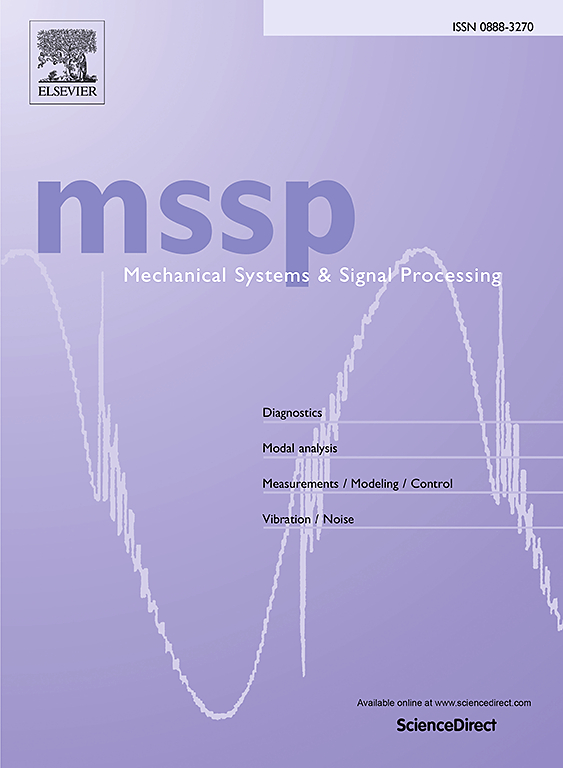A real-time coupling model and kinetic behavior of flexible dual-rotor-bearing systems with blade-casing rubbing-impact
IF 7.9
1区 工程技术
Q1 ENGINEERING, MECHANICAL
引用次数: 0
Abstract
Blade-casing rubbing impact is a prevalent failure mode in aeroengine rotor systems. This study presents a real-time coupled model for the dual-rotor-bearing system, aimed at investigating the vibration transmission and behavior interference between system components. In this model, dedicated methods are developed to characterize the flexible components and the rubbing-impact phenomena, while the real-time coupling relationship is formulated. By integrating experimental testing with software analysis techniques, the influence mechanisms of rubbing-impact failure on system behavior response and bearing contact process are comprehensively revealed. Rotor deformation compels the bearings to operate persistently under misaligned conditions, resulting in the introduction of contact angles and reversal zones in the ball-race contact direction. The effects of the bearing system on rotor dynamics are categorized into three aspects: low-speed instability, contact reversal zone and non-periodic behavior, all of which contribute to the generation of harmonic responses. Moreover, periodic malicious rubbing-impact forces are induced by modal vibrations, which reduce system vibration intensity and bearing contact angles. However, the stable operation is disrupted and the critical speed is delayed, while a reduction in blade-casing clearance contributes to the expansion of rubbing-impact zone and the chaotic system behavior.
叶片-机匣摩擦-冲击柔性双转子-轴承系统的实时耦合模型及动力学行为
叶片-机匣摩擦冲击是航空发动机转子系统中常见的一种失效模式。本文建立了双转子-轴承系统的实时耦合模型,旨在研究系统部件之间的振动传递和行为干扰。在该模型中,开发了表征柔性部件和摩擦-冲击现象的专用方法,并建立了实时耦合关系。通过实验测试与软件分析技术相结合,全面揭示了摩擦冲击失效对系统行为响应和轴承接触过程的影响机理。转子变形迫使轴承在不对准的条件下持续运行,导致在球圈接触方向引入接触角和反转区。轴承系统对转子动力学的影响可分为三个方面:低速不稳定、接触反转区和非周期行为,它们都会导致谐波响应的产生。此外,模态振动会引起周期性的恶意摩擦冲击,从而降低系统的振动强度和轴承接触角。然而,由于叶片与机匣间隙的减小,摩擦冲击区域的扩大和系统混沌行为的发生,破坏了系统的稳定运行,延迟了临界转速。
本文章由计算机程序翻译,如有差异,请以英文原文为准。
求助全文
约1分钟内获得全文
求助全文
来源期刊

Mechanical Systems and Signal Processing
工程技术-工程:机械
CiteScore
14.80
自引率
13.10%
发文量
1183
审稿时长
5.4 months
期刊介绍:
Journal Name: Mechanical Systems and Signal Processing (MSSP)
Interdisciplinary Focus:
Mechanical, Aerospace, and Civil Engineering
Purpose:Reporting scientific advancements of the highest quality
Arising from new techniques in sensing, instrumentation, signal processing, modelling, and control of dynamic systems
 求助内容:
求助内容: 应助结果提醒方式:
应助结果提醒方式:


